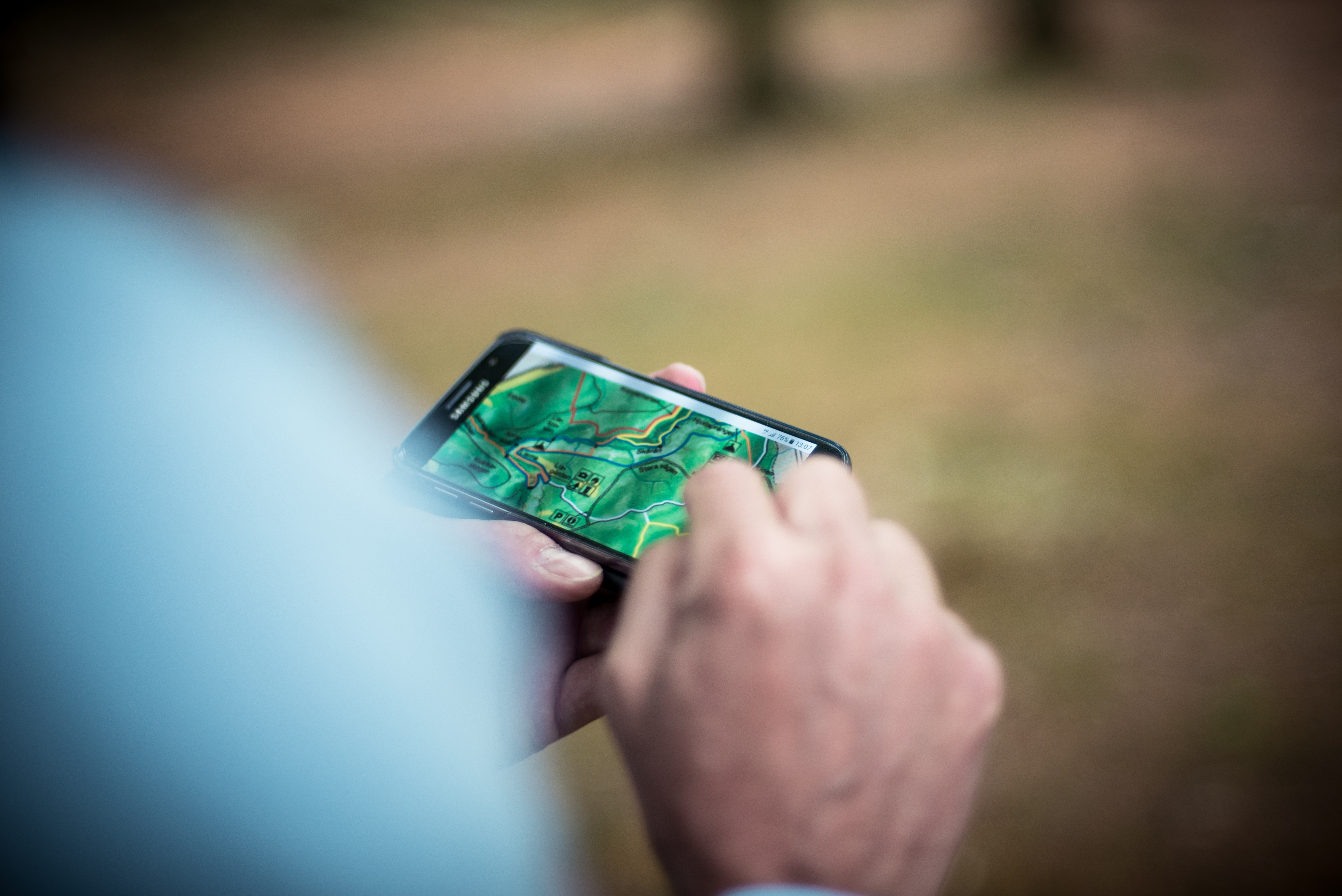6 Tips for Exploring Fishing Spots

Visiting the same fishing spot over and over can become boring. Sometimes you just need some new scenery, a new challenge, or maybe just something closer to home. This is a good opportunity to start exploring new ponds, rivers, and lakes. I’ve got a few tips that will make this process easier and more enjoyable.
Start with a Map
I’m not talking about a paper map or a book of maps. Those can quickly become out-of-date with new roads, construction, etc. When looking for new fishing spots, start by pulling up Google Maps in your favorite browser. To make it easier to spot bodies of water, immediately turn off the satellite mode. Zoom in to or search for the general area you want to explore and scroll around, until you find either blue or green areas (water or parks/golf courses, respectively). Once you find water, look at its surroundings. If it helps, switch to satellite mode to see more details. Look for details of the water, any paths or roads leading to or around it, and determine if it may be accessible. Switching to satellite mode can also reveal whether the water is fenced off or if the trees/brush are too thick, making it inaccessible and may even reveal that it’s not a body of water after all and may be an error on the map.
I recommend organizing your fishing spots and record them into a custom Google My Maps. Doing so allows you to capture the potential waters, the status of your exploration, and maybe some notes about it. Once you determine that it’s worth the exploration, mark it on your custom Google My Map as a potential water. Once you explore a particular body of water, you’ll be able to go back and add notes, including what you had caught, its accessibility, and other observations you have made.
Plan Your Trip
Now that you’ve spent the time marking your potential spots on your map, you’ll want to spend a little more time planning your trip. If you didn’t have the map to begin with, you may not be able to explore in the most efficient manner. You’ll want to plan your trip based on relative location and apply the same principles of the travelling salesman problem. Choose the best path of exploration, taking into account driving and walking. Use your time wisely. Plan ahead and don’t waste it driving clear across town to one spot and back again to the next.
Pack Light
I’ve made a few mistakes lately and took all the gear I have when exploring. It’s one thing to bring all your gear and keep it in your vehicle. However, you’re just going to slow yourself down if you start walking around with a huge backpack full of tackle and an armful of different rods. I recommend taking with you a universal rod/reel and only a few different types of lures. If you find that the spot deserves a re-visit, you can always come back with more of your arsenal. You’ll want to be as agile as possible, finding and assessing as many spots as you can in the time that you have.
Dress Appropriately
When you’re exploring new areas, you will have no idea what you’re going to run into. I recommend always wearing pants (the lighter the better) and, depending on the weather, you may want to wear a long-sleeve shirt as well. Wearing these will protect your legs and arms from briars, poison ivy, insect bites, ticks, etc. However, wearing these do not provide 100% protection. You’ll want to periodically check your body for ticks and leeches, depending on the climate and environment you are exploring. I also recommend wearing pants that have enough pockets for the light tackle you will be carrying with you. For the exposed parts of your body, you may want to apply sunscreen or bug spray, again depending on the climate and your environment.
Ask for Permission
There may be bodies of water you have chosen that look like they are absolute honeyholes. But there is one problem. It is private property and/or the pond lies on the land of a business. Golf courses, for example, are notorius for having small ponds that seem to be off-limits to anglers. However, don’t dismiss the idea. Ask the owner/manager/greenskeeper for permission to do some catch-and-release fishing. Assure them that you are a clean angler and that you will leave behind no evidence of you ever being there. If it is a business, also offer to fish outside of normal business hours. You’d be surprised who will say Yes.
Do Not Trespass
Be smart about exploring and don’t do anything illegal. If there are Private Property, Keep Out, or No Tresspassing signs, please obey them. Even if there are no such signs, but the owner denies you permission to fish on their property, don’t defy their wishes. If you find yourself in a situation where you are on unmarked, private property and you are confronted, assure the owner that it was an honest mistake and don’t let it happen again.
I hope these tips will help you be an efficient, safe, and honest explorer when you start searching for your next best fishing spots. Good luck!